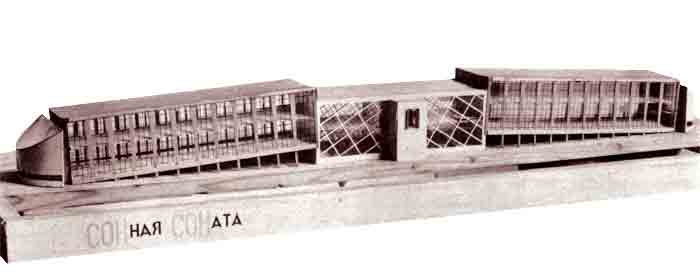 Like the home vodka tap we joked about years ago, this enhanced water supply seems to be further evidence that literally every aspect of the human environment can not only be redesigned, it can be aggressively capitalized upon in its ensuing augmented state.
Like the home vodka tap we joked about years ago, this enhanced water supply seems to be further evidence that literally every aspect of the human environment can not only be redesigned, it can be aggressively capitalized upon in its ensuing augmented state. The article also mentions, for instance, that even the building's "lighting patterns and air quality" have been re-designed so as to maximize the quality of residents' sleep, bringing to mind Stalin's "sleep labs," in which aromatherapy and ambient music would have been used to lull stalwart workers of the CCCP back into bed each evening:
At either end of the long buildings were to be situated control booths, where technicians would command instruments to regulate the temperature, humidity, and air pressure, as well as to waft salubrious scents and "rarefied condensed air" through the halls. Nor would sound be left unorganized. Specialists working "according to scientific facts" would transmit from the control center a range of sounds gauged to intensify the process of slumber. The rustle of leaves, the cooing of nightingales, or the soft murmur of waves would instantly relax the most overwrought veteran of the metropolis. Should these fail, the mechanized beds would then begin gently to rock until consciousness was lost.It doesn't seem far-fetched that New York City buildings will add, to their already existing stock of doormen and cleaning crews, lifestyle technicians working behind the scenes like conductors of a sensory orchestra, recalibrating sounds, scents, and lighting intensity, even dialing up barometric pressure at certain key times of day, for the strangely mummified people living inside.
 [Image: Konstantin Melnikov's "Sonata of Sleep"].
[Image: Konstantin Melnikov's "Sonata of Sleep"].Specialty mixtures of air—perhaps even air subscriptions—could be piped in through luxury ducts as atmospheric brewmasters toggle dials in the basement, frantically trying to zero-in on domestic perfection for expectant customers breathing calmly above.
Không có nhận xét nào:
Đăng nhận xét